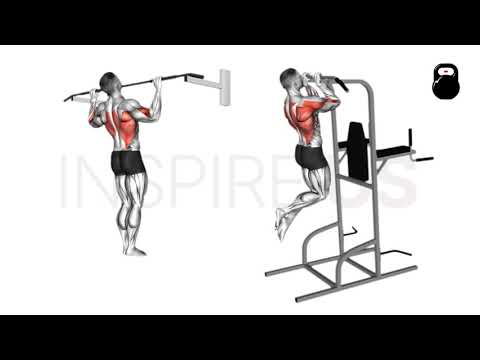Wide Grip vs Close Grip Pull Ups: Differences Explained
Pull-ups are an overall solid exercise, that much has been established. But the question becomes somewhat more nuanced when we ask what type of pull-up is best - does a wider grip produce a more effective exercise than a narrow one?
Like most other questions related to training, the answer is that it will depend on the exerciser and their goals.
In essence, the only true difference between wide grip and narrow grip pull-ups is in the focus of either exercise.
Wide grip pull-ups reduce the involvement of the arms, shifting the focus more towards the back, whereas narrow grip pull-ups have the exact opposite effect and will provide more training stimulus to the muscles of the arms.
What are Wide Grip and Close Grip Pull-Ups?
Both close and wide grip pull-ups are pull-up variations featuring a compound muscular recruitment pattern and multi-joint kinetics.

In terms of programming, both variations are used for moderate volume sets with the exerciser’s own body weight as the sole source of resistance - though more advanced exercisers may increase intensity by adding further weight.
As both wide and close grip pull-ups feature the same main mechanics, they both recruit muscles like the latissimus dorsi, biceps brachii, trapezius, posterior deltoid head and rhomboids in a dynamic fashion.
Other muscle groups like the core and brachialis may also be used in a stabilizing capacity.
While wide and close grip pull-ups differ in terms of muscular focus and hand placement, they nonetheless share the same benefits of training the back and biceps, improving both size and strength in all muscle groups recruited therein.
Furthermore, both variations are excellent for improving general pulling strength of the upper body, and reinforcing mechanics like scapular movement and elbow flexion.
Who Should Perform Wide Grip Pull-Ups?
Wide grip pull-ups are more difficult but nonetheless lower risk in comparison to close grip pull-ups, and as such are more suitable for exercisers who have yet to truly master pull-up form cues.
Furthermore, the wide grip features a greater focus on the muscles of the back, and is a better choice for those seeking greater back width or general pulling strength.
Who Should Perform Close Grip Pull-Ups?
Close grip pull-ups shift the focus of the exercise more towards the arms, and are thereby better for exercisers seeking greater arm muscle mass and strength, or those who find wide grip pull-ups to be uncomfortable at the shoulders.
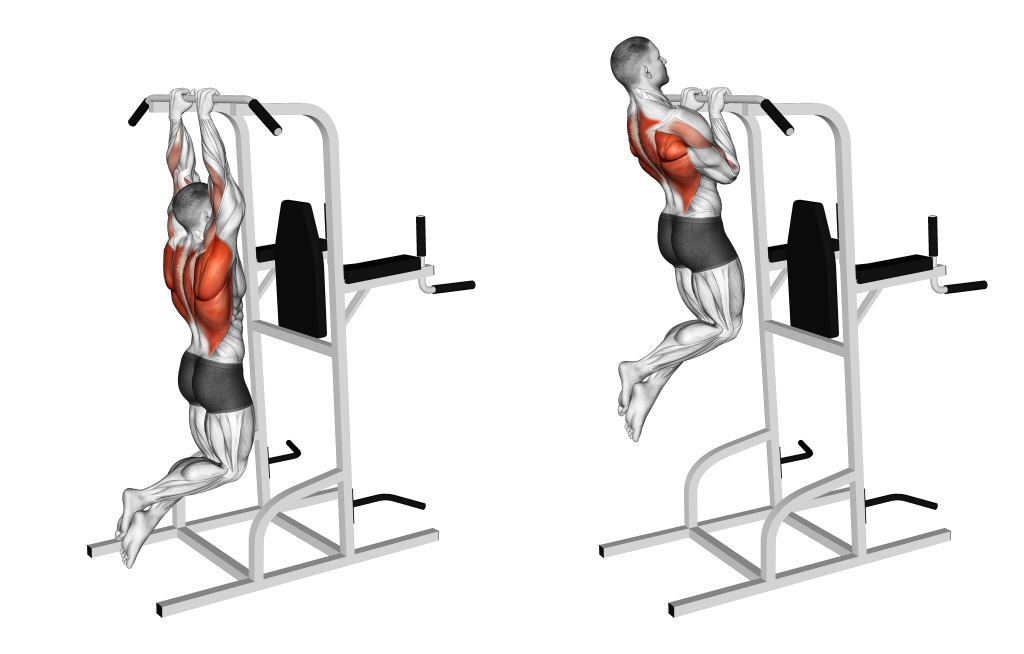
Mechanical Differences of Wide Grip Pull-Ups and Close Grip Pull-Ups
Wide grip pull-ups and close grip pull-ups differ in terms of how far away the hands are set.
Generally, close grip pull-ups place the hands at least shoulder-width apart, if not closer - whereas wide grip pull-ups place the hands a significant distance further apart than shoulder-width.
Though it is common knowledge that doing so alters what muscles are focused upon, changing the grip width also alters several key mechanics of the pull-up.
Range of Motion
Because pull-ups involve the hands as an anchor point to the pull-up bar, it stands to reason that placing the hands further apart will summarily decrease the distance the body must travel to move over said pull-up bar.
As such, wide grip pull-ups feature a shorter range of motion, whereas close grip pull-ups will often feature a longer range of motion due to the length in which the arms must move.
Elbow Positioning
Wide grip pull-ups will involve a greater flaring of the elbows than close grip pull-ups would, and as such may shift more of the stress towards the shoulder joint and shoulder blades.
While it is good form to prevent elbow flaring whenever possible, the wide grip involved in the former variation may make doing so unavoidable - hence the frequent complaints of shoulder pain.
Body Path and Distance From Bar
During pull-ups, the path in which an exerciser’s body will move upwards can depend on not only their proportions and adherence to proper form, but also by the distance of their hands along the bar.
A wider grip places the arms to the side of the body and will allow the exerciser to simply pull themselves vertically upwards, keeping the head and torso within a few horizontal inches from the bar.
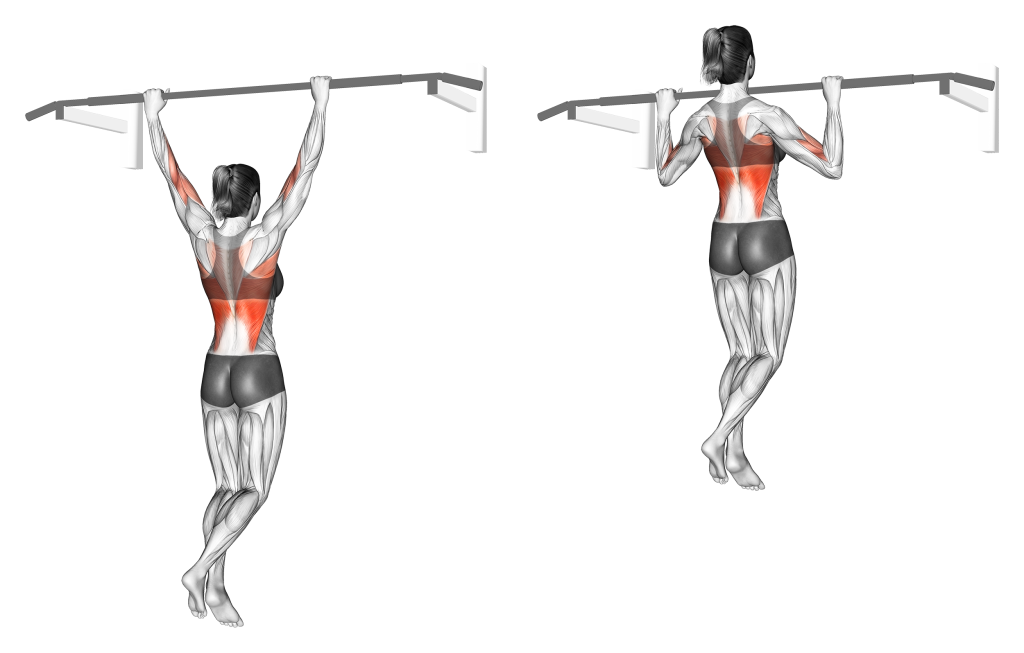
Conversely, a narrow grip will require that the exerciser move further back from the bar and travel in a more angled path, as they will need to make space for the arms as they pull themselves upwards.
This change in path and distance from the bar will alter what muscles are emphasized by either exercise, with a wide grip allowing for the lats to be worked through their entire range of motion, and a narrow grip recruiting the trapezius, brachialis and brachioradialis to a greater degree.
Muscles Worked by Wide Grip Pull-Ups and Close Grip Pull-Ups
While both types of pull-ups train the same muscles, they do not do so in an equal manner.
Wide grip pull-ups place a greater emphasis on the muscles of the latissimus dorsi and trapezius, whereas close grip pull-ups focus more on the muscles of the brachialis, brachioradialis and biceps.
The most obvious result of this difference is what muscles will develop to a greater extent - but an often overlooked fact also lies in how either variation is performed.
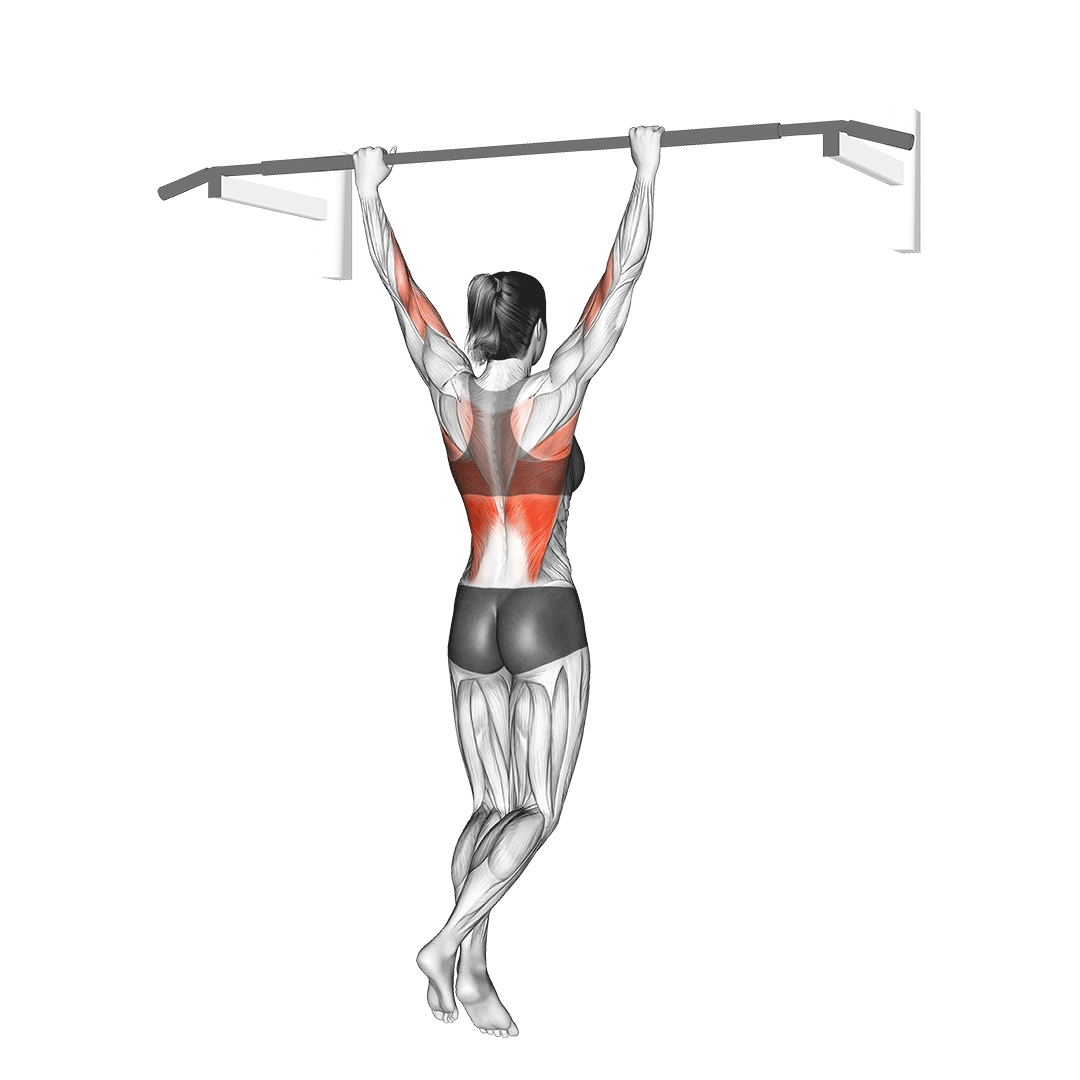
The fact that wide grip pull-ups recruit the muscles of the back to a greater extent will mean that it is considerably easier to perform for high volume sets, whereas the smaller muscles of the arms will fatigue more rapidly and as such limit the volume of close grip pull-ups.
To put it short - for greater back development and volume, go with the wide grip. For arm development, the close grip is a better choice.
Injury Risk of Wide Grip Pull-Ups and Close Grip Pull-Ups
While both pull-up variations are relatively safe if done with correct form, the wide grip pull-up is particularly infamous for causing shoulder discomfort and injury. This is due to the position in which a wide grip places the shoulder joint, forcing it to bear far more weight and force than would be the case in other pull-up variations.
Though it is possible to counter this risk with proper shoulder mobility work and additional caution, individuals with a history or at risk of shoulder injuries should steer clear of wide grip pull-ups.
Difficulty and Complexity of Wide Grip Pull-Ups and Close Grip Pull-Ups
Because of the difference in mechanics between wide and close grip pull-ups, they are not considered equal in terms of complexity and gross physical difficulty.
Novices may wish to avoid wide grip pull-ups due to the more complex form and greater risk of injury, whereas more advanced exercisers seeking greater training intensity can opt for a narrow grip instead.
Which Exercise is "Better" for Newbies?
Close grip pull-ups are a better choice than wide grip pull-ups for novice exercisers, though they may also wish to look into negative and conventional pull-ups to supplement their training.
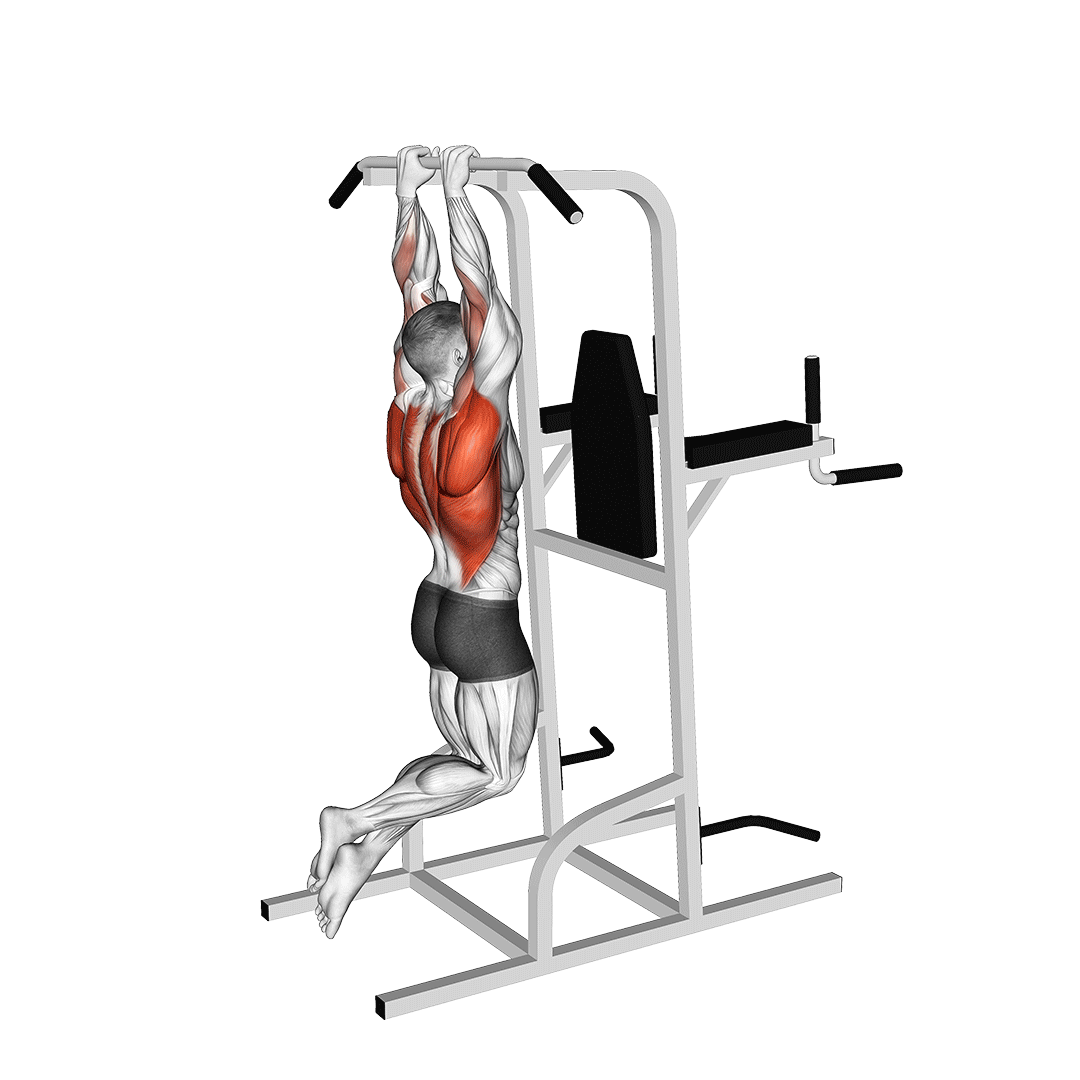
The reason why close grip pull-ups are a more appropriate choice for newer exercisers is its low risk of injury, and the fact that less muscular strength is required to complete a repetition.
Which Exercise is More Intense?
Wide grip pull-ups feature less arm muscle recruitment and a longer lever, meaning that they are arguably more intense per repetition than close grip pull-ups.
Lifters seeking greater intensity in their training will find that the wide grip pull-up is a better choice in that regard, although care should be taken in the context of form adherence.
Frequently Asked Questions (FAQ)
Which Pull-Up is the "Hardest"?
The most difficult kind of pull-up is likely one that features an overhand grip, with the hands set wider than shoulder-width apart.
This is the most mechanically disadvantageous stance, and should create a comparatively far more difficult exercise than one that features a narrow underhand grip.
Which Pull-Up Grip is "Easiest"?
To create an easier pull-up, the ideal grip is an underhand one that features shoulder-width or slightly wider hand distance along the bar.
With such a grip, the exerciser will be allowed to fully utilize the muscles of their arms alongside those of their back, creating a more mechanically advantageous stance and easier exercise overall.
Are Pull-Ups Harder for Bigger Guys?
Pull-ups involve the exerciser lifting their entire body weight in the air, and as such - yes, pull-ups are more difficult for heavier individuals.
This is the reason why leaner exercisers are capable of performing more pull-ups than those of greater mass, as each repetition will have them leverage their entire body against their own muscular strength.
In Conclusion, Are Wide or Close Grip Pull-Ups Better?
Unless working the lats to the greatest extent is the goal, it is better to pick close grip pull-ups.
Not only is the risk of injury lower, but the range of motion is considerably wider - meaning greater quality repetitions and a more balanced distribution of stimulus across the arms and back.
Remember that your choice of exercise is not solely constrained to wide or close grip pull-ups, and there are a number of alternatives like the chin-up, neutral grip pull-up or conventional pull-up, all of which serve a similar purpose to the wide and narrow grip variations.
References
1. Lusk SJ, Hale BD, Russell DM.. Grip width and forearm orientation effects on muscle activity during the lat pull-down. J Strength Cond Res. 2010;24:1895–1900.
2. Youdas JA, Amundson CL, Cicero KS, Hahn JJ, Harezlak DT, Hollman JH.. Surface electromyographic activation patterns and elbow joint motion during a pull-up, chin-up, or Perfect-Pullup™ rotational exercise. J Strength Cond Res. 2010;24(12):3404–3414.
3. Leslie, Kelly & Comfort, Paul. (2013). The Effect of Grip Width and Hand Orientation on Muscle Activity During Pull-ups and the Lat Pull-down. Strength and Conditioning Journal. 35. 75-78. 10.1519/SSC.0b013e318282120e.

